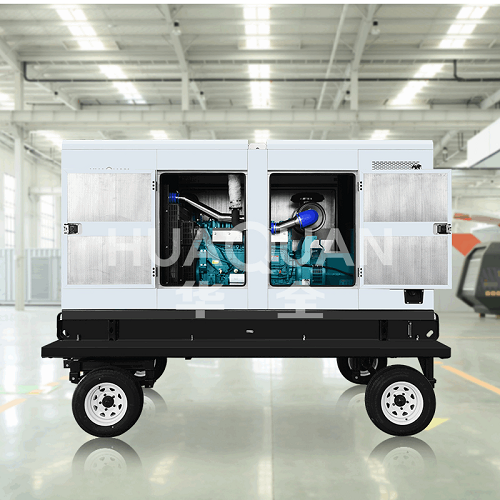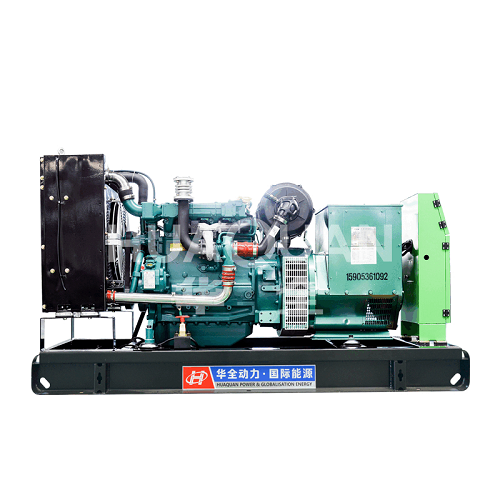Okay, when selecting an
enterprise backup generator, you need to consider a variety of factors to ensure it can provide stable, reliable, and safe power support during critical moments. The following is a detailed list of features a potential backup generator should possess:
Core Feature: Reliability
1. Sufficient Power Output:
Precisely Matched to Requirements: Capable of covering the total power requirements of all critical loads in the enterprise (such as servers, core production line equipment, emergency lighting, security systems, critical HVAC systems, etc.).
Maintaining Margin: Considering starting current (especially for motor loads) and potential future load growth, it is generally recommended that the rated power be 15%-25% higher than the actual maximum demand.
Clearly Marked: Distinguish between rated power and standby power to ensure the selected power can meet continuous operation requirements.
2. Fast and Reliable Startup and Loading:
Fast Startup Time: The time from utility power interruption to generator startup, reaching rated voltage and frequency, and completing power supply to critical loads should be as short as possible (typically within a few to tens of seconds, depending on load sensitivity). For data centers, hospitals, and other facilities, even higher requirements (e.g., within 10 seconds) are required. High Start-Up Success Rate: Guarantees an extremely high start-up success rate (e.g., ≥ 99.9%) under various environmental conditions (cold, hot, and humid).
Seamless Transfer: Combined with an automatic transfer switch, it enables automatic, rapid, and seamless switching between utility power and generator power, ensuring uninterrupted power to critical loads (or an acceptably short interruption).
3. Stable and Reliable Operation:
Excellent Voltage and Frequency Stability: Output voltage and frequency must remain within specified ranges (e.g., ±1% voltage fluctuation, ±0.5% frequency fluctuation), with minimal fluctuation to avoid damage or downtime to sensitive electronic equipment.
Continuous Operation Capability: Ability to operate continuously for extended periods (hours or even days) to meet power outages of varying lengths. The engine and generator must be designed to withstand full load operation.
Highly Reliable Engine: Utilizes industrial-grade, proven diesel or gas engines (such as Cummins, Caterpillar, Mitsubishi, MTU, Perkins, and other reputable brands) with rugged and durable construction. High-quality AC generators: Use high-efficiency, low-harmonic distortion, and durable generator heads (such as Marathon, Stanford, and Leroy-Somer).
4. Adequate Fuel Supply and Management System:
Sufficient fuel tank capacity: The internal fuel tank or external storage tank should be able to meet the critical load operating needs of the company's estimated longest power outage (considering local power outage history and risk).
Fuel Type Applicability: Choose diesel (most common, stable and easy to store), natural gas (requires pipeline supply, lower operating costs but relies on pipelines), or dual-fuel (higher flexibility) based on availability and cost.
Reliable Fuel System: This includes an efficient fuel filtration system, a reliable fuel pump, and leak-proof design. Diesel systems should also consider measures to prevent condensation and microbial growth.
Safety and Environmental Protection
1. Safety Design and Protection:
Regulatory Compliance: Meet all local electrical safety, fire safety, and environmental regulations.
Good Grounding and Overload/Short-Circuit Protection: Use comprehensive electrical protection devices (circuit breakers, relays, etc.). Emission Control: Meet local emission regulations (such as EPA Tier 4 Final) and install necessary exhaust treatment systems (such as DPF, diesel particulate filter, SCR, and selective catalytic reduction).
Carbon Monoxide Protection: For indoor installations, a rigorous exhaust system design is required to ensure exhaust does not backflow into the building. Outdoor installations must also pay attention to wind direction and ventilation. This is critical to life safety!
Fire and Explosion Protection: The fuel tank and fuel lines are designed to meet fire protection requirements; the engine compartment is insulated and noise-reducing.
Physical Protection: The housing is sturdy, prevents accidental contact with live components, and is vandal-resistant (e.g., installed within a fence).
2. Noise Control:
Low-Noise Operation: Equipped with an efficient muffler and soundproof enclosure to keep operating noise within acceptable limits, avoiding disturbance to the surrounding environment or violating local noise regulations. This is particularly important for locations near offices or residential areas.
3. Environmental Compliance:
Low Emissions: As mentioned above, the engine must meet strict emission standards.
Leakage Prevention: The fuel tank and oil system must be designed to prevent fuel or oil leaks from contaminating soil and groundwater. Leak detection and secondary containment facilities (such as leak trays) are typically required.
Waste Disposal: Consider compliant disposal options for waste oil, used filter elements, etc.
Operation and Maintenance Ease
1. Comprehensive Monitoring and Control:
Automatic Control Module: Equipped with a powerful automatic control module, it provides automatic start/stop, monitoring of operating parameters (voltage, current, frequency, oil pressure, water temperature, speed, battery voltage, fuel level, accumulated operating time, etc.), fault alarm and diagnosis, and automatic shutdown protection.
Remote Monitoring Capabilities: Supports remote monitoring (via the internet or mobile app), allowing managers to monitor status in real time, receive alarms, and view historical data, enabling rapid response even when not on-site.
Clear Local Display: Control panel information is clear and easy to read.
2. Maintenance-Friendly Design:
Excellent Accessibility: Key components such as the engine, generator, cooling system, battery, and filter are easily accessible for maintenance.
Modular Design: Easily replaces wearing parts (filter elements, belts, etc.).
Detailed Maintenance Manual: Provides clear operating and maintenance instructions. Local Technical Support and Spare Parts Availability: The manufacturer or supplier should have a strong local after-sales service network and spare parts inventory.
3. Regular Automatic Testing:
The system should include an automatic start-up test function (e.g., a short weekly or monthly run) to simulate power outages, verify system reliability, and maintain the proper condition of all engine components (lubrication, battery charging, and degassing of air from the fuel system).
Other Important Considerations:
4. Cooling System:
An efficient cooling system (radiator, fan) should ensure effective heat dissipation in high-temperature environments and under full-load operation to prevent overheating and shutdown.
Select air cooling (small) or liquid cooling (medium or large, more stable and quiet) depending on the environment.
5. Starting System:
A reliable starter motor and a high-quality, large-capacity, long-life starting battery (typically requiring maintenance or AGM/lithium batteries) should be included, along with a battery charger.
6. Installation Flexibility:
Depending on site conditions, installation options include open, rain-proof, silent trailer, and containerized.
Consider size, weight, and transportation access restrictions.
7. Cost-Effectiveness:
Total Cost of Ownership: Consider not only the purchase price but also long-term fuel consumption, maintenance costs, potential downtime losses (reliability), and lifecycle. A high-quality, reliable generator may have a higher initial investment, but is often more cost-effective in the long run.
8. Brand Reputation and Warranty:
Choose a reputable brand that offers reliable product quality and comprehensive warranty services (typically, core components have extended warranty periods).
Summary:
Selecting a backup generator for your business is a critical investment decision. Reliability, safety, power matching, and fast start-up and switchover capabilities are core priorities. Furthermore, features such as low noise, low emissions, ease of maintenance, and intelligent monitoring can significantly enhance the user experience and reduce operational risks and maintenance costs. It is crucial to conduct a comprehensive assessment based on your business's specific load requirements, budget, site conditions, regulatory requirements, and the supplier's service capabilities to select the most suitable solution. Consulting with a professional generator supplier or power consultant is recommended for detailed design and selection.


